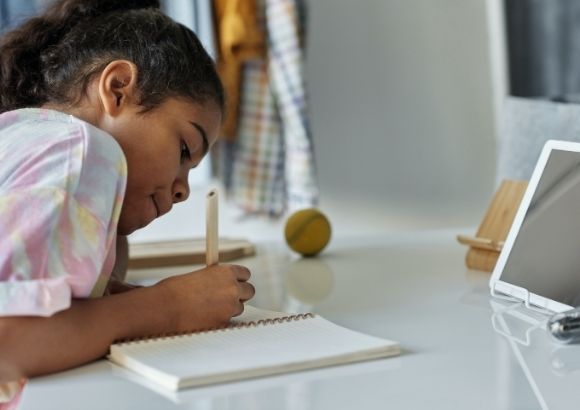[UPDATED] Private and International Schools Are Back to Online Learning
 Schooladvisor Team
Schooladvisor TeamJust in, in line with Standard Operating Procedures (SOPs) for the PKP, PKPB and PKPP areas issued by MKN on May 9, 2021, it is informed that all private education institutions (IPS) registered with KPM:
- school categories include international schools and expatriates;
- central categories include tuition centers, development centers and language centers; and
- private kindergarten
Are NOT ALLOWED to operate face-to-face from 10 May 2021 until 6 June 2021. Schools can perform teaching and learning at home according to their respective methods and preparations throughout this period.
However, students who are undergoing international exams such as IGCSE, IBDP and other equivalent international exams are allowed to sit for the exams in their respective schools based on the schedule of exams set by their respective international exam board. The SOP of the student's movement to sit for the examination is as prescribed by KPM and MKN.
A reminder to all parents whose kids are taking exams to leave early from their homes so as to arrive on time for the examinations. This is due to the roadblocks that you may encounter on the way to school. Be prepared with a letter from the school if you are crossing districts and stay as calm as possible.
All schools should obey these instructions and always follow the SOP set by KPM, MKN and MOH to ensure the government's efforts to control the COVID-19 virus transmission can be implemented at all levels.

Many schools are still struggling to adapt with online learning. Online learning comes with its own sets of challenges, and many teachers and students aren’t properly equipped yet to deal with the sudden changes in the system.
Some of the challenges that come with online learning include:
Classroom size: It’s already challenging to supervise a physical class, let alone a class held on Zoom or Google Hangouts. With everyone logging in from different locations, it’s harder for the teacher to effectively capture students’ attention or provide personal help to struggling students.
Technology disparity: It’s easier for higher-level education centres such as universities to hold online classes, as the students are likely to own their own computer devices. However, the same can’t be said for primary and secondary schools. Not every child in the same household has his own laptop or tablet, so attending classes online can prove problematic when there’s only one computer for the child to share.
Family factors: There are plenty of distractions in a child’s home that may shift the child’s attention away from the virtual class. In a house with plenty of family members or even younger siblings, it may be difficult for the child to concentrate on schoolwork.
Lack of knowledge in tech: Many young children are accustomed to the digital age and know how to work a laptop or tablet fairly well. On the other hand, many teachers—especially the older generation—aren’t tech-savvy and may need more time to grasp its know-how. With the sudden shift from physical to virtual, many teachers are forced into making this transition and may thus slow down the teaching process.
Children left behind: Every child learns at a different pace, and some struggle more than others. In a physical setting, it would be easier for the teacher to assist individual students by sitting with them and going through their work in person. However, that would be impossible to do in a virtual setting, and students who need extra guidance will get left behind even further as teachers now lack the ability to personally help them in their studies, confined instead to a record and a glass screen.
For private schools and international schools, it’s easier to shift from the physical classroom to the Zoom class meeting, due to their previous experiences in online learning. However, it’s harder for public schools to do the same.
Many teachers have voiced their difficulties over the new system. In an article published by Channel News Asia, several Malaysian public school teachers have expressed difficulties in maintaining concentration among their students and guiding them effectively.
For example, a Chinese schoolteacher has explained that guiding her students has become more difficult as they often rely on her to explain their English syllabuses in Mandarin to them—something she can’t individually do ever since she started teaching online. Another primary school teacher has complained that her students pay even less attention to her in virtual classes, with some students outright opting out of classes and blaming it on poor Wi-Fi connection or faulty devices.
For students to suddenly leave their classrooms and paper and pencils behind and take the leap to virtual learning is a transition not to be taken lightly. Adapting to an entirely new learning system would take time, and many children would get left behind in the process. Moreover, children are accustomed to having their teachers and peers in the same room as them and seeing them on screen while confined at home doesn’t deliver quite the same experience.
As for the teachers, learning how to teach in an unfamiliar new system would also take time, if not more. Teachers would have to learn how to give and grade homework, guide floundering students, and teach lessons — all while navigating the technology required to do so.
Unfortunately, the pandemic isn’t going anywhere anytime soon. We hope that with more time and practice, students and teachers are able to better adapt to the circumstances of online learning and come out thriving.
Recent Articles
- What Should You Be Looking for in a Preschool?
- HELP Education Group Unveils New Sports Oval in Subang 2 Campus
- Exploring the Homeschooling Path: What Parents Need to Know Before Taking the Leap
- More Parents Are Now Opting for International Schools in Malaysia
- AISM Students Who Dream Big and Build Bigger

